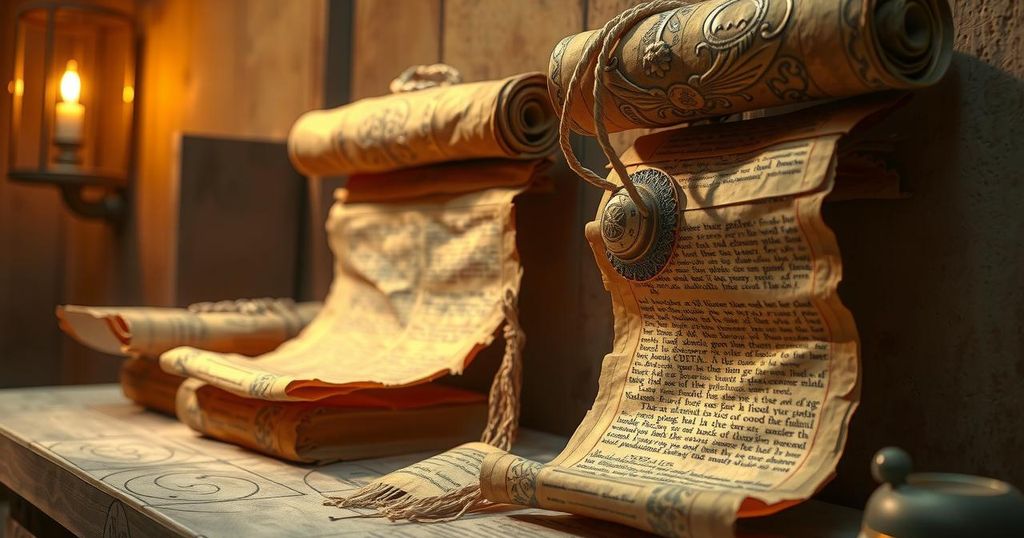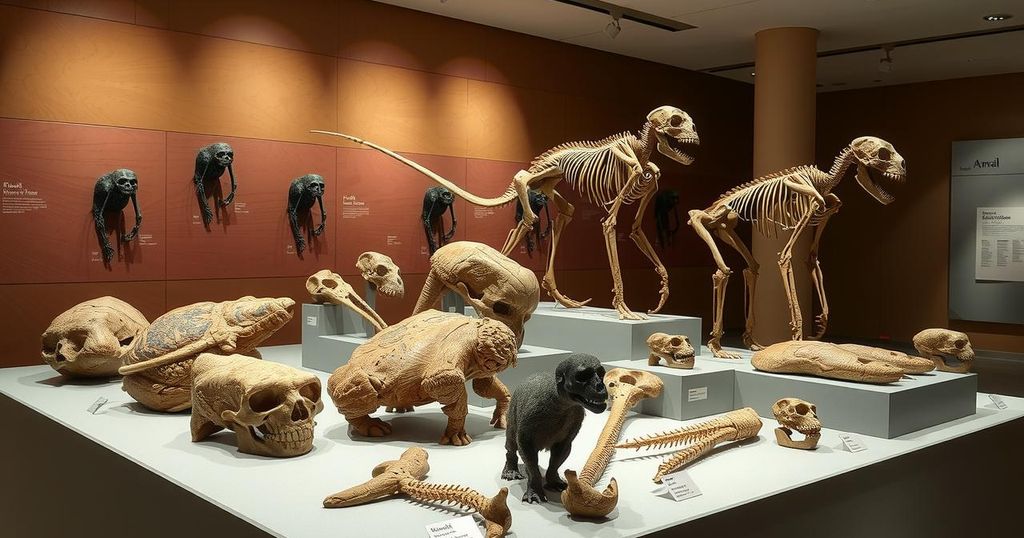AI Unveils Secrets of Herculaneum: A Modern Archaeological Breakthrough
Researchers at the University of Oxford have used AI to decipher an ancient papyrus scroll from Herculaneum, thought to be unreadable for over 250 years. This collaboration with the Vesuvius Challenge marks a significant merge between modern technology and archaeology, showcasing AI’s potential to reveal historical texts through advanced scanning methodologies.
The realm of artificial intelligence might often be wrapped in futuristic notions, but it’s currently shining a light on historical mysteries. Researchers at the University of Oxford have made an incredible advancement with AI by unlocking an ancient papyrus scroll that had left scholars scratching their heads for over 250 years. This milestone signals a significant partnership between cutting-edge tech and archaeology, breathing life into old civilizations’ secrets.
AI has already had a profound impact on medicine and astronomy, yet its application in archaeology was just starting to gain traction. Thanks to the recent collaboration between Oxford’s Bodleian Library and the Vesuvius Challenge, AI’s role in historical research is rapidly taking on a transformative shape. It’s exciting to imagine what else might be just around the corner.
The scroll that has caught the researchers’ attention comes from Herculaneum—an Italian city buried under the volcanic wrath of Mount Vesuvius in 79 AD. The ancient papyrus scrolls from this disaster have suffered over the years, turning into fragile, unintelligible bits, proving a major obstacle for academics. However, significant progress was made in July 2024 when the scroll in the Bodleian Library was meticulously scanned using a technique called the Diamond Light Source.
What really made this whole operation click was the ink. Researchers pinpointed that the ink on this particular scroll had a special chemical makeup that likely included lead. This unique aspect made it stand out in X-ray scans, in contrast to other scrolls from Herculaneum, which is quite the milestone.
AI algorithms were tailored to pinpoint these subtleties of the ink, catching even the slightest traces of writing hidden from view. By doing this, the AI enabled scholars to separate the clear sections of the papyrus from where text was buried. The AI’s primary job was to detect this ink and signal the presence of the obscured characters. But important to note—the actual leaps of interpreting the text fell into the capable hands of seasoned paleographers from the Vesuvius Challenge. AI, however, was the guiding hand revealing the hidden letters waiting to be unlocked by scholars.
So far, the enhanced scans have revealed columns of text—fascinating but challenging to make sense of. The ancient Greek word “διατροπή,” translating to “disgust,” emerged twice in the initial glances, igniting curiosity among historians about what else might be resting beneath the layers of time.
Dr. Brent Seales, who co-founded the Vesuvius Challenge, shared his contagious excitement, saying, “We are thrilled with the success of scanning this scroll at the Bodleian Library. This scroll contains more recoverable text than any other Herculaneum scroll scanned so far.” There’s still quite a journey ahead, though—refining the process and fully unveiling the text remains a priority.
Marking a collaborative effort, the Vesuvius Challenge invites the public to join in decoding these ancient writings, highlighting the importance of collective engagement in this historical quest. This development in archaeological science melds modern technology meaningfully with the intrigue of the ancient world—a pivotal step for the future of archaeology.
This partnership between AI and those who dig through time heralds a new chapter in exploring ancient civilizations. While the full deciphering of these Herculaneum scrolls is a work in progress, the promise of uncovering more using similar methodologies is vast. We’re left with an eager anticipation that the texts locked away for centuries will soon be visible to the world, with AI shining the way to understanding our past.
The use of AI at the University of Oxford to decode ancient papyrus scrolls from Herculaneum showcases a revolutionary step in archaeology. By employing advanced scanning and identifying chemical signatures in the ink, researchers are closer than ever to unlocking long-hidden texts. This collaboration not only highlights AI’s potential within historical inquiries but also points toward a bright future for the field as technology and archaeology unite. The excitement for upcoming discoveries is palpable, with hopes of unveiling ancient treasures that have been obscured for millennia.
Original Source: arkeonews.net




Post Comment